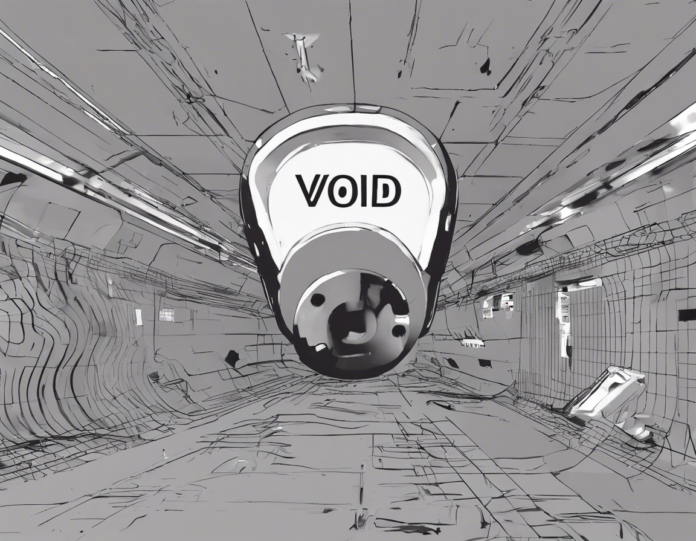Introduction
Void scanners, also known as void detection devices, are state-of-the-art tools used in various industries to detect hidden objects or spaces within solid materials. These devices utilize advanced technologies such as radar, ultrasound, or x-ray to penetrate surfaces and provide valuable insights to the user. Understanding how void scanners work and their applications is crucial for industries such as construction, manufacturing, and security. In this comprehensive article, we will delve into the world of void scanners to unlock the mysteries surrounding these powerful tools.
Types of Void Scanners
-
Ground-Penetrating Radar (GPR): GPR utilizes electromagnetic radiation to image the subsurface and detect voids, pipes, and other buried objects. It is commonly used in construction and geophysical surveys.
-
Ultrasonic Void Scanners: These devices use high-frequency sound waves to detect voids or defects within materials such as concrete, wood, or metal. Ultrasonic void scanners are ideal for non-destructive testing in structures.
-
X-ray Void Scanners: X-ray scanners provide detailed images of objects hidden within materials. They are widely used in security screenings at airports and industrial quality control processes.
How Do Void Scanners Work?
Void scanners operate based on the principle of sending energy waves into a material and analyzing the reflected signals to identify anomalies such as voids or objects. The specific technology used determines the scanning depth, resolution, and penetration capabilities of the device. Ground-penetrating radar, for instance, can detect voids several feet below the surface, making it ideal for geological surveys and utility mapping.
Applications of Void Scanners
-
Construction: Void scanners are crucial for assessing the structural integrity of buildings, bridges, and tunnels. They help identify hidden voids that could compromise the stability of structures.
-
Manufacturing: In manufacturing processes, void scanners are used to inspect welds, composite materials, and other components for defects or air pockets. This ensures the quality and safety of the final product.
-
Security: X-ray void scanners play a vital role in security screenings at airports, seaports, and border crossings. These devices can detect concealed weapons, explosives, or contraband hidden within luggage or cargo.
-
Archaeology: Void scanners are increasingly used in archaeological surveys to explore underground structures, tombs, or artifacts without the need for invasive excavation.
Benefits of Using Void Scanners
-
Non-Destructive Testing: Void scanners allow for thorough inspections without damaging the material or structure being examined. This minimizes downtime and reduces the need for costly repairs.
-
Enhanced Safety: By detecting hidden voids or defects, void scanners help prevent accidents and ensure the safety of buildings, infrastructure, and industrial facilities.
-
Improved Efficiency: Void scanners enable quick and accurate assessments, saving time and resources in construction, manufacturing, and security operations.
-
Data Visualization: Modern void scanners provide detailed images and reports that facilitate better decision-making and problem-solving for users.
Challenges and Limitations
While void scanners offer numerous benefits, they also have some limitations that users should be aware of:
-
Limited Penetration Depth: Depending on the technology used, void scanners may have restrictions on the depth at which voids can be detected.
-
Complexity of Data Interpretation: Interpreting the results of void scans requires expertise and experience to differentiate between actual voids and other anomalies.
-
Cost: High-quality void scanners can be expensive, which may pose a barrier to smaller businesses or organizations with budget constraints.
-
Environmental Factors: External conditions such as moisture content, temperature, or material composition can influence the accuracy of void scanner readings.
FAQs (Frequently Asked Questions)
- How accurate are void scanners in detecting hidden objects?
-
Void scanners are highly accurate in identifying voids, objects, or defects within materials. However, the accuracy may vary depending on the technology used and the operator’s proficiency.
-
Are void scanners safe to use in industrial settings?
-
Void scanners are safe when operated following manufacturer guidelines. Users should be trained in handling the equipment to prevent accidents or hazards.
-
Can void scanners detect voids in different materials?
-
Yes, void scanners can detect voids in various materials such as concrete, metal, wood, and composite materials. The scanning depth and resolution may vary based on the material properties.
-
How long does it take to conduct a void scan in a typical construction project?
-
The time required for a void scan depends on the size of the area to be scanned, the complexity of the structure, and the technology used. In general, void scans are relatively quick and efficient processes.
-
Do void scanners require regular maintenance or calibration?
- Yes, void scanners need periodic maintenance and calibration to ensure accurate results. Users should follow the manufacturer’s recommendations for upkeep and calibration schedules.
Conclusion
Void scanners are indispensable tools for industries seeking to uncover hidden anomalies within materials or structures. By harnessing advanced technologies such as ground-penetrating radar, ultrasonic waves, or x-ray imaging, these devices provide valuable insights that enhance safety, efficiency, and quality in various applications. Understanding the capabilities, limitations, and best practices for using void scanners is essential for maximizing their potential benefits. As technology continues to evolve, void scanners will play an increasingly vital role in shaping the future of construction, manufacturing, security, and other sectors.


Recent comments